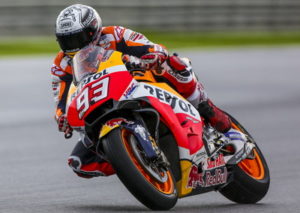 There is, rather obviously, a difference between casual motorbike racing and the world of MotoGP, just as there is between the F1 circuit and pushing the speed limit along the M6. Yet the difference doesn’t just lie in the formality of the organisation of the races nor in the professionalism of the competitors, but also in the actual motorbikes themselves. They are as finely tuned as those F1 cars, differing from normal motorbikes in countless different ways.
There is, rather obviously, a difference between casual motorbike racing and the world of MotoGP, just as there is between the F1 circuit and pushing the speed limit along the M6. Yet the difference doesn’t just lie in the formality of the organisation of the races nor in the professionalism of the competitors, but also in the actual motorbikes themselves. They are as finely tuned as those F1 cars, differing from normal motorbikes in countless different ways.
The world of MotoGP isn’t just about the top bracket of the industry, either. There are four divisions that the championship is split up into, with MotoGP being the top bracket before Moto2, Moto3 and MotoE all come into play. MotoE was a new division in 2019 and requires bikes to have electric motors rather than the four-stoke engines used by the other three classes. The MotoGP season has expanded since its inception so that by 2019 it involved 19 Grand Prix across five continents.
Top Betting Site For Motorbike Racing
888

If you've read more than a couple of our sports pages you will notice 888 Sport crop up a lot as our recommended betting site for a range of sports and that is because they have fantastic coverage across the board and do not just focus on the traditional big sports.
This includes bike racing of all types. 888 have markets, long in advance of events, for MotoGP, Moto2, Moto3, MotoE and all superbike racing.
In-play they are unbeatable for the range of markets offered and their prices.
Betting On MotoGP & Motorbike Racing
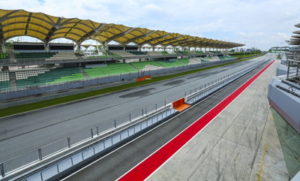 Whichever discipline you opt for, there are numerous different ways to bet on motor racing events that all follow broadly the same pattern. Here’s a look at the main bets you’ll want to think about placing once you’ve decided the competition that you think is for you:
Whichever discipline you opt for, there are numerous different ways to bet on motor racing events that all follow broadly the same pattern. Here’s a look at the main bets you’ll want to think about placing once you’ve decided the competition that you think is for you:
- Ante-post bets on the tournament winner – These are bets you place well ahead of time on the rider that you think is most likely to win the overall tournament, such as the rider’s championship in MotoGP
- Ante-post bets on individual races – Within the overall discipline there are individual race, such as the Gran Premio Octo di San Marino e della Riviera di Rimini in San Marino for MotoGP. This is a bet on which rider will win the individual race rather than the overall competition
- In-play bets on races – Some bookies will allow you to place bets in-play about the potential winner of a race, so you can watch along and go with the flow of the race
The History Of MotoGP
International Cup for Motorcycle Racing
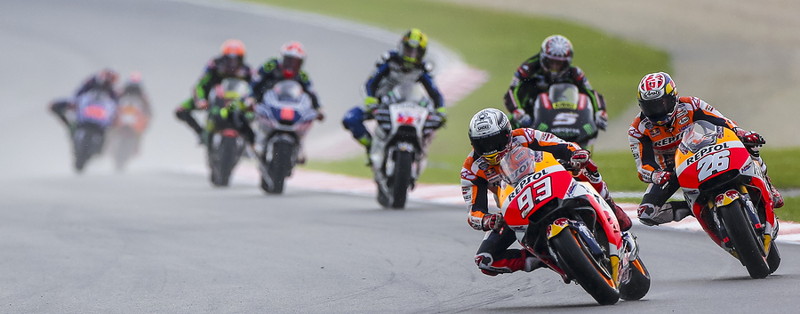
In order to look at the history of the MotoGP we first have to look a the history of motorbike racing in general, which is why we’ve classed them together on this page. At the early part of automobile racing there was no distinction between cars and motorbikes, almost certainly because there was no real distinction between the two machines at that point.
On the 22nd of July 1894, the first automobile race took place in France between Paris and Rouen. The year after, the United States of America followed suit with a race from Chicago to Evanston and by 1905 the Automobile Club de France had begun to organise a competition that was seen as the most important in the world of automobile racing.
In terms of motorbike racing one of the most important moments came in 1904 when the Fédération Internationale de Motocyclisme was formed. One of their first jobs was the create an international cup for motorcycle racing, with the first international road race taking place in France the following year.
During the early years of the sport the races were run on public roads, with most coming in at between 50 and 100 miles in length. It wasn’t until Brooklands was completed in 1906 that this began to change, being an egg-shaped purpose-built venue as it was.
Automobile And Motorbike Racing Go Their Separate Ways
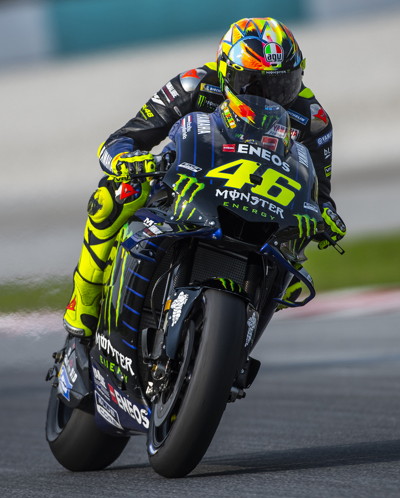 The split between automobile and motorbike racing didn’t really begin to happen until after the First World War, having both used much the same circuits and offered similar competitions before that point. This was particularly true in America, where the racing of cars was mainly done on ovals tracks and the country began to engage in the likes of stock car and drag racing.
The split between automobile and motorbike racing didn’t really begin to happen until after the First World War, having both used much the same circuits and offered similar competitions before that point. This was particularly true in America, where the racing of cars was mainly done on ovals tracks and the country began to engage in the likes of stock car and drag racing.
Motorcycle racing in the States, meanwhile was predominantly done on dirt tracks that had been mainly used for horse racing prior to that.
In the UK and the rest of Europe, on the other hand, racing had mainly been taking place on pre-paved public roads as demonstrated by the likes of the Spa-Francorchamps in Belgium. The biggest change was to come in the wake of the Second World War, which was the point at which the FIM began to organise the motorcycle racing Grand Prix.
The first version of the event got underway with the Isle of Man TT in 1949. Indeed, the FIM’s version of a major competition actually got underway before that of the FIA, which didn’t begin its own Grand Prix until 1950.
The Fédération Internationale de Motocyclisme
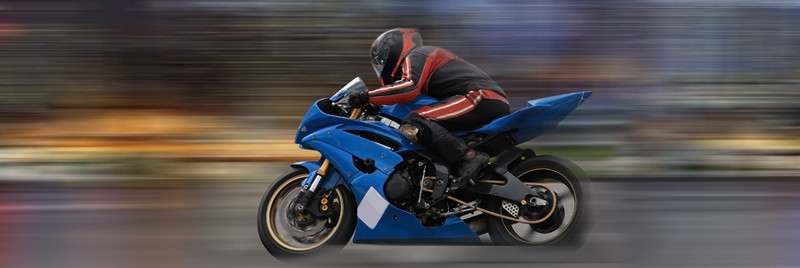
The foundation of the Fédération Internationale de Motocyclisme in 1904 was a major turning point in the history of motorcycle racing, predominantly because the organisation began to arrange races and meetings that were specifically aimed at motorbike racing rather than just general automobiles.
It began life as the Fédération Internationale des Clubs Motocyclistes and the British Auto-Cycle Union was one of the organisation’s founding members. When it was dissolved in 1906 it seemed inevitable that it would move to England and that’s exactly what happened when it was re-started in 1912.
The change of name to the Fédération Internationale Motocycliste came in 1949 as the organisation was starting up the first Road Racing World Championship Grand Prix, with the headquarters moved to Switzerland a decade later.
The organisation’s name underwent another change in 1998 when it became the Fédération Internationale de Motocyclisme, in part owing to the fact that it was chasing recognition from the International Olympic Committee to make it an official sport. That happened two years later when it was one of the disciplines on show at the Summer Olympics in Sydney.
The Changes To FIM Rules
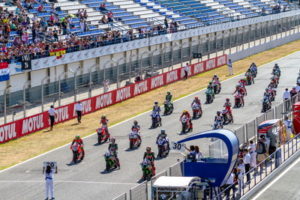 During the 1950s and 1960s four-stroke engines were the dominant ones in all classes of motorbike racing, mainly because of the rules that allowed for cylinders with smaller pistons and plenty of gears.
During the 1950s and 1960s four-stroke engines were the dominant ones in all classes of motorbike racing, mainly because of the rules that allowed for cylinders with smaller pistons and plenty of gears.
Two-stroke engines began to come into use in the smaller classes by the 1960s, then in 1969 the FIM brought in new rules that restricted all classes to using six gears and two cylinders to all but the 350 cc and 500 cc classes. They blamed it on the rising costs of developing engines that non-works teams had to cope with, but it didn’t go down well with the industry.
Yamaha, Honda and Suzuki, which had previously been very successful, began to abandon the industry in protest and didn’t return until the mid-1970s. Two-stoke engines became the dominant force in the industry and even when Honda attempted to bring the four-stroke back it failed.
One of the biggest changes came about in the 1990s when sidecars were removed from the world championship events. The decade also saw four cylinders being the maximum in use regardless of whether it was in two-stroke or four-stroke engines, with that practice having been started in the 1970s. That helped the sport to differentiate itself from both TT formula racing and motocross.
Rebrand To MotoGP Comes Into Effect
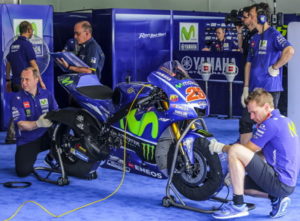 The rules were changed once more in 2002 in order to bring about the phasing out of two-stroke 500 cc engines. It was at the same point that the top division in the sport was renamed as MotoGP, whilst the major manufacturers were wrestling with the choice between two-stroke engines of up to 500 cc or four-stroke engines up to a maximum of 990 cc.
The rules were changed once more in 2002 in order to bring about the phasing out of two-stroke 500 cc engines. It was at the same point that the top division in the sport was renamed as MotoGP, whilst the major manufacturers were wrestling with the choice between two-stroke engines of up to 500 cc or four-stroke engines up to a maximum of 990 cc.
They were given freedom as to how the engine configuration would be implemented, leading to four-stroke engines dominating the field and those of the two-stroke variety being abandoned by pretty much everyone by 2003.
In the years the followed, many different rules and regulations were brought in, both decreasing and increasing the various engine capacities. Claiming Rule Teams was introduced ahead of the 2012 season, for example, which allowed them to have more engines and larger fuel tanks than the various factory teams, though factory teams could then ‘buy’ their powertrain for a pre-fixed price.
All of the numerous changes meant that by 2019 an average motorbike would cost in the region of £3 million.
MotoGP Format
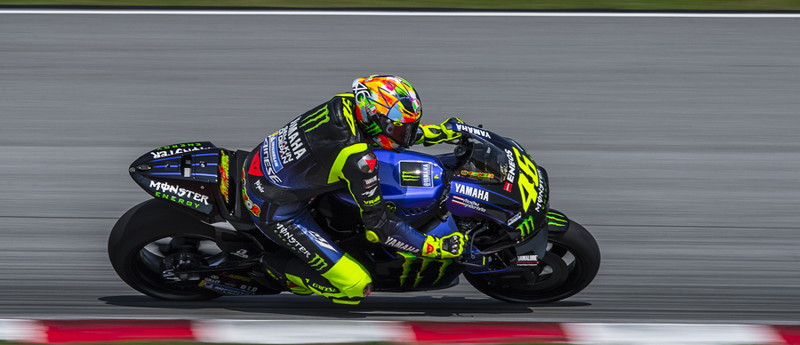
Ahead of the 2019 MotoGP season it was decided that there would be 19 Grand Prix races to decide the championship, with 12 of them taking place in Europe. The others were made up of 3 events in Asia, 2 in the Americas, 1 in Australia and 1 in the Middle East.
The exact series of events was as follows:
- VisitQatar Grand Prix – Lusail, Qatar
- Gran Premio Motul de la República Argentina – Termas de Rio Hondo, Argentina
- Red Bull Grand Prix of the Americas – Austin, United States of America
- Gran Premio Red Bull de España – Jerez de la Frontera, Spain
- SHARK Helmets Grand Prix de France – Le Mans, France
- Gran Premio d’Italia Oakley – Scarperia e San Piero, Italy
- Gran Premi Monster Energy de Catalunya – Montmeló, Spain
- Motul TT Assen – Assen, Netherlands
- HJC Helmets Motorrad Grand Prix Deutschland – Hohenstein-Ernstthal, Germany
- Monster Energy Grand Prix České republiky – Brno, Czech Republic
- myWorld Motorrad Grand Prix von Österreich – Spielberg, Austria
- GoPro British Grand Prix – Silverstone, United Kingdom
- Gran Premio Octo di San Marino e della Riviera di Rimini – Misano Adriatico, San Marino
- Gran Premio Michelin de Aragón – Alcañiz, Spain
- PTT Thailand Grand Prix – Buriram, Thailand
- Motul Grand Prix of Japan – Motegi, Japan
- Australian Motorcycle Grand Prix – Ventnor, Australia
- Shell Malaysia Motorcycle Grand Prix – Sepang, Malaysia
- Gran Premio Motul de la Comunitat Valenciana – Cheste, Spain
Both the host countries and the courses that are used can change from season to season, but that should give you some idea of the places that the MotoGPs take place.
When it comes to the actual races, the starting grid includes three different columns that contain about 20 riders, with grid positions being decided according to the riders’ qualifying speed. The fastest takes up the first position, with the rest taking up the various slots down the order. Races themselves to last around 45 minutes and they’re sprints, meaning that the riders don’t stop for fuel or tyre changes.
Since 2005 the races have enjoyed a flag to flag rule, whereby a white flag is shown if there’s rain to mean that riders can swap the motorcycle they’re riding on for an identical one as long as it’s got different tyres. Prior to that they would stop the race entirely to allow riders to swap to wet tyres. As well as alternative tyres, bikes used in wet weather tend to have different ways of breaking and ‘softer’ suspension.
If there is a crash on a course then the marshals come out to wave yellow flags, encouraging the remaining riders to avoid that part of the course. Races only tend to be red flagged if those involved in the incident cannot be removed from the course safely.
Moto2
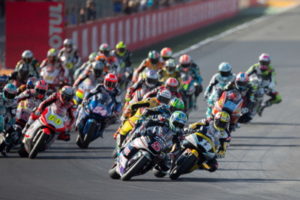 As mentioned in the introduction, the world of motorbike racing is split up into four different divisions. Moto2 is the second-tier of the sport and was introduced in 2010 as a replacement for the 250 cc two-stroke class that had existed before.
As mentioned in the introduction, the world of motorbike racing is split up into four different divisions. Moto2 is the second-tier of the sport and was introduced in 2010 as a replacement for the 250 cc two-stroke class that had existed before.
It is a 600 cc four-stroke class and the engines were originally supplied exclusively by Honda, with Triumph taking over in 2019.
This change altered the way the division worked, with Triumph engines boasting up to 765 cc in three cylinder engines. The tyres are all supplied but Dunlop and the electronics for the bikes are supplied by producers sanctioned by the FIM with a maximum cost of €650.
Moto3

The third-tier is Moto3, which came into being in 2012 as a replacement for the 125 cc class that had been in play before then. The restriction for this class is to single-cylinder engines with 250 cc four-stroke that have a maximum bore of 81 millimetres. Motorcycle and rider have to weigh at least 148 kilograms,.
The Moto3 division is something of a youth section of the sport, with driver age limited to 28, whilst both wild-card entrants to events and new contracted riders are not allowed to be older than 25.
MotoE
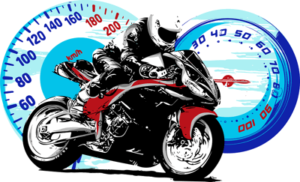 The final tier of racing in MotoGP is the MotoE class, which came into being in 2019 thanks to the MotoE World Cup. As the name suggests, this level of the sport is limited to all-electronic motorcycles and uses the Energica Motor Company manufactured Energica Ego Corsa.
The final tier of racing in MotoGP is the MotoE class, which came into being in 2019 thanks to the MotoE World Cup. As the name suggests, this level of the sport is limited to all-electronic motorcycles and uses the Energica Motor Company manufactured Energica Ego Corsa.
The inaugural season took place over 6 rounds during 5 different Grand Prix weekends.
There are obviously numerous different restrictions put in place for each division, not just when it comes to engine sizes but also the tyres that the various riders are allowed to use. The riders themselves tend to choose these according to how things ‘feel’ when they do their practice rounds, qualifying and during the warm-up laps before a race gets underway.
Similarly the weight of the various bikes is determined by numerous factors, including the number of cylinders in use and the fuel tank capacity.
The Biggest MotoGP Tournaments
| Competition | Discipline | Details |
|---|---|---|
| MotoGP | Grand Prix Racing | The major tournament in the world of Grand Prix motorcycle racing, the competition has been taking place since 1949 |
| Superbike World Championship | Superbike Racing | Inaugurated in 1988, this is a competition for modified production motorbikes and the Superbike World Championship is the premier competition |
| AMA Supersport Championship | Road Racing | A series that allows motorcycles of up to 600 cc engines to be used, this has been taking place since 1987 |
| British Superbike Championship | Superbike Racing | As with the Superbike World Championship, this has been taking place since 1988 but is specifically for superbike racers in the UK |
| Supersport World Championship | Superbike Racing | Introduced in 1990 as something of a European Championship support to the Superbike World Championship, it became a ‘World Series’ event in 1997 |
| Sidecar World Championship | Sidecar Racing | This international sidecar Racine championship has been taking place since 1949 and became an event in its own right when sidecars were no longer supported by the Grand Prix of Motorcycles |
| Supermoto S1 | Various | Supermoto races alternate between dirt tracks, jump tracks and road racing, providing a true test of a rider’s abilities |
Without question, MotoGP is the biggest motorcycle racing competition in the world. It is motorbike racing’s equivalent of the F1 and is therefore the tournament that all of the best riders want to be involved in.
It is, however, not the only one and above we look at the biggest competitions in the different disciplines.
